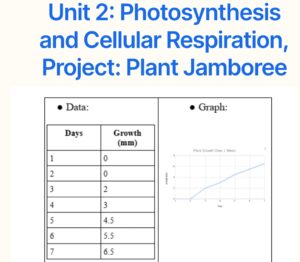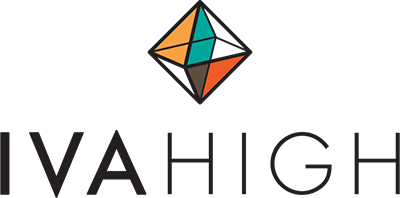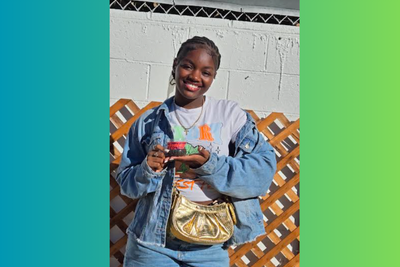How Project-Based Learning & Intellectual Virtues Grow the Type of Learner AI Can’t
The future doesn’t need more perfect GPAs. It needs problem-solvers, question-askers, and paradigm-shifters. It needs humans who know how to navigate uncertainty and build something better inside it. – Alice Oueijan, IVA High Counselor
The artificial intelligence revolution has arrived at our school doors and every parent, educator, and student seems to be grappling with the same question: how do we navigate this transformation without losing what makes us human? While education leaders from around the globe are calling for a fundamental reimagining of education, IVA High is equipping students to think critically, creatively, and with the capacity for self-growth. Our teachers teach students how to think, not merely what to think. This is more important and relevant than ever.
Our tuition-free high school is designed to intentionally strengthen the uniquely human capacities that a computer could never replicate–while also embracing the powerful potential of AI as a tool for learning, creativity, and growth. At IVA High, we don’t ignore technology’s impact—we teach students how to engage with it critically and ethically.
Project-Based Learning & Intellectual Virtues in the Classroom = AI Proof Learning
IVA High balances rigorous critical thinking through project-based learning with an emphasis on intellectual virtues, the characteristics that enable individuals to effectively engage in learning, problem-solving, and decision-making. This combination does more than prepare students for the jobs of tomorrow (although exposure to a broad variety of careers and areas of study is a critical component of our program) – it develops agile minds ready to navigate whatever challenges the future may bring.
On the heels of another successful Exhibition of Learning in April, we want to take a moment to dig deeper into how these amazing projects are developed in the classroom, and how we weave the study of intellectual virtues into these projects. Let’s take a closer look at one particular project in 9th grade biology, the knowledge and skills that were learned and applied, and the outcomes of this type of deep learning.
9th Grade Biology Project Spotlight
9th grade biology students and their teacher begin preparing for the Exhibition of Learning months in advance by identifying an essential question related to their science curriculum: How can you apply the process of photosynthesis? Like most essential questions, this one is complex, with many diverse paths that could have been explored on the way to an answer.
As students learned about the principles of photosynthesis, the idea of an experiment began to take shape. They wondered: How can we observe photosynthesis? Students embodied the role of a biologist when they grew a plant from a seed and measured plant growth over a period of 1 week. They documented the plant’s growth in graph form – an interdisciplinary tie-in to math class – and shared their data with an audience at the Fall 2024 Exhibition of Learning in a presentation called: Photosynthesis and Cellular Respiration Project: Plant Jamboree.

Yes, a chatbot can explain photosynthesis. But does it invite wonder? Does it build intellectual courage or careful reasoning? At IVA, we pair information with inquiry—and that’s where real learning begins. Here’s a quick rundown of just a few of the skills and intellectual virtues that would never have been developed if we left the question to AI:
- Curiosity: An essential question was asked and an experiment was designed.
- Attentiveness: Students patiently observed their plant and attended to its needs for survival.
- Intellectual Thoroughness: Students crafted the experiment from question to action and documented their findings in an easy-to-understand graph.
- Intellectual Tenacity: Pride in work is only achieved with at least a bit of struggle. It is tenacity that produces the smiles on students’ faces in the pictures with their plants – it says, “I DID THIS!”
By co-designing projects alongside their students, IVA High teachers center student voice and agency in their learning. They are the authors of their learning and our teachers expertly guide classes so student input, creativity, and thinking can shine. Here’s an example from a recent math project:
We were investigating this big unit problem that involves a circus act of jumping off a ferris wheel and diving into a pool that’s moving on a cart and calculating the math and important details that go into that. The surprising aspect of this activity for me was how creatively students approached it. I had them build physical models of the situation and we saw all sorts of examples. Some used cardboard, some used popsicle sticks, some used materials from their own house–but there really were a lot of impressive models of the ferris wheel and moving cart. Beyond that, many students had some interesting approaches in how they could figure out the math behind the problem, including things some of them had never studied before (trigonometry, etc.).
In addition to knowledge and skills, these carefully crafted learning experiences have immense potential for students to shift their thinking and challenge assumptions. Here’s how one IVA High teacher saw critical thinking in action:
During a discussion about genetic selection for disability, there was a heated discussion about distinguishing between deafness as a disability and deafness as a culture. I was not surprised by the discussion, but more so by the reflection afterward when an involved student reflected that much of their emotional response came from recognizing that she had made negative assumptions about other disabilities in the past, which did not align with her position on Deaf culture. She felt compelled to revisit that position and think more critically about it.
There are steps forward, steps backward, a-ha moments, and inevitably a few mistakes on the way to these complex completed projects. And while artificial intelligence can offer quick answers, IVA High students go deeper–doing the big work that is motivating, sometimes a bit messy, and, dare we say, fun. And while AI can support the process, it’s human curiosity, reflection, and perseverance that truly make it meaningful.
If you are looking for a high school that is not just reacting to AI in education, but actively preparing students to use it wisely and think beyond it–our small but mighty high school is enrolling for the 2025-26 school year. We’re tuition-free and helping students become thinkers, not just tech users.
About IVA High
IVA High is a fully accredited, tuition-free public high school in Long Beach, California with a mission to empower students to think well: creatively, critically, and with a capacity for self-growth. Our learner-centered approach puts students in charge of their education, while dual enrollment and paid internships transform learning into action. Students come for college prep, STEAM and exploratory pathways for their future; they stay for smaller, safer learning in a vibrant, caring community. Get to know us on social media @ivahigh and on the web at www.ivahigh.org IVA High – Curious Minds, Empowered Community – Join us!


